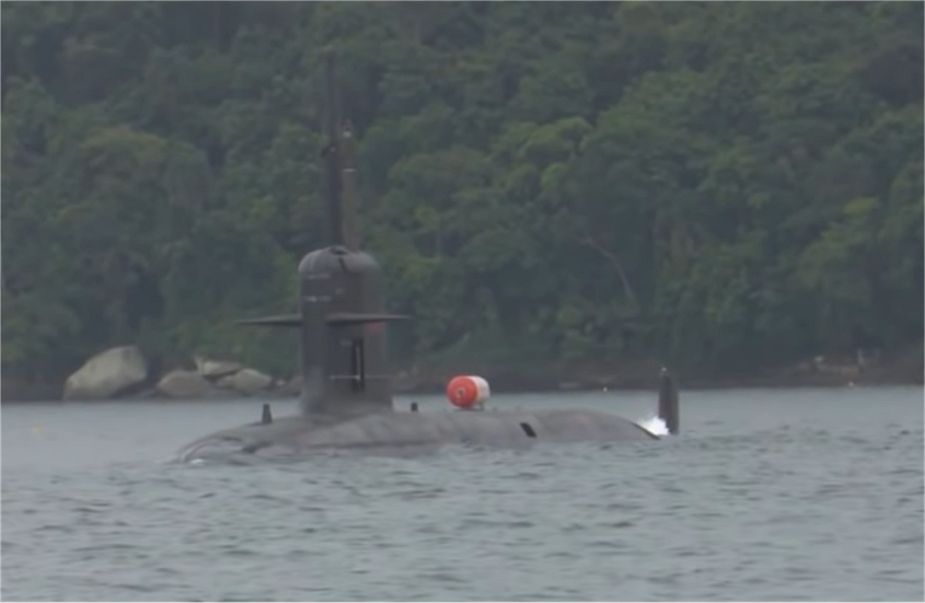Riachuelo Scorpene-class submarine of the Brazilian Navy has successfully passed its first static immersion trials. It is an essential step that enables the testing of the density as well as the stability of the submarine. This first immersion is conducted by a joint team: ICN, Nafco and Naval Group.
Riachuelo Scorpene-class submarine of the Brazilian Navy has successfully passed its first static immersion trials. It is an essential step that enables the testing of the density as well as the stability of the submarine. This first immersion is conducted by a joint team: ICN, Nafco and Naval Group.
 First static immersion trials with Riachuelo submarine of the Brazilian Navy. (Picture source Brazilian Navy)
First static immersion trials with Riachuelo submarine of the Brazilian Navy. (Picture source Brazilian Navy)
In December 2018, the Brazilian Navy has launched its first Brazilian-built Scorpene-class submarine, the Riachuelo. The ceremony took place at the Itaguaí Navy base in presence of the President of the Federal Republic of Brazil and of the elected President.
In 2009, Brazil purchased four enlarged Scorpene-class for US$9.9 billion with a technology transfer agreement and a second agreement to develop a French/Brazilian nuclear-powered submarine. The Brazilian submarine class was given the designation Riachuelo class.
The hull of the first S-BR (S40) was laid down at Cherbourg on 27 May 2010 and is to be jumboized at the Brazilian Navy Shipyard in Sepetiba in late 2012. The latter three submarines will be built there entirely, and are planned to be commissioned in 2020, 2021, and 2022. The nuclear-powered submarine Álvaro Alberto is under construction since 2018, with a scheduled launch for 2027.
The Scorpène-class submarines are a class of diesel-electric attack submarines jointly developed by the French Direction des Constructions Navales (DCNS) now Naval Group and the Spanish company Navantia, and now by Naval Group.
The propulsion system of Scorpene-class submarines consists of 4 x MTU 12V396 SE84 series diesel engines coupled with Kermount Industries 580kW generators. Sensors and processing will be made up of an acoustic surveillance system, digital-assisted attack, and dedicated analysis and monitoring hardware. The sonar system will be provided by Thales.
The Scorpene-class submarines are armed with six 533mm torpedo launching tubes, 18 heavy weapons, tube-launched MBDA SM-39 Exocet anti-ship missiles and precision-guided weapons. The weapons are carried in weapon launching tubes and can be easily reloaded at sea.
This submarine can launch crippling attacks on surface and underwater enemy targets.







